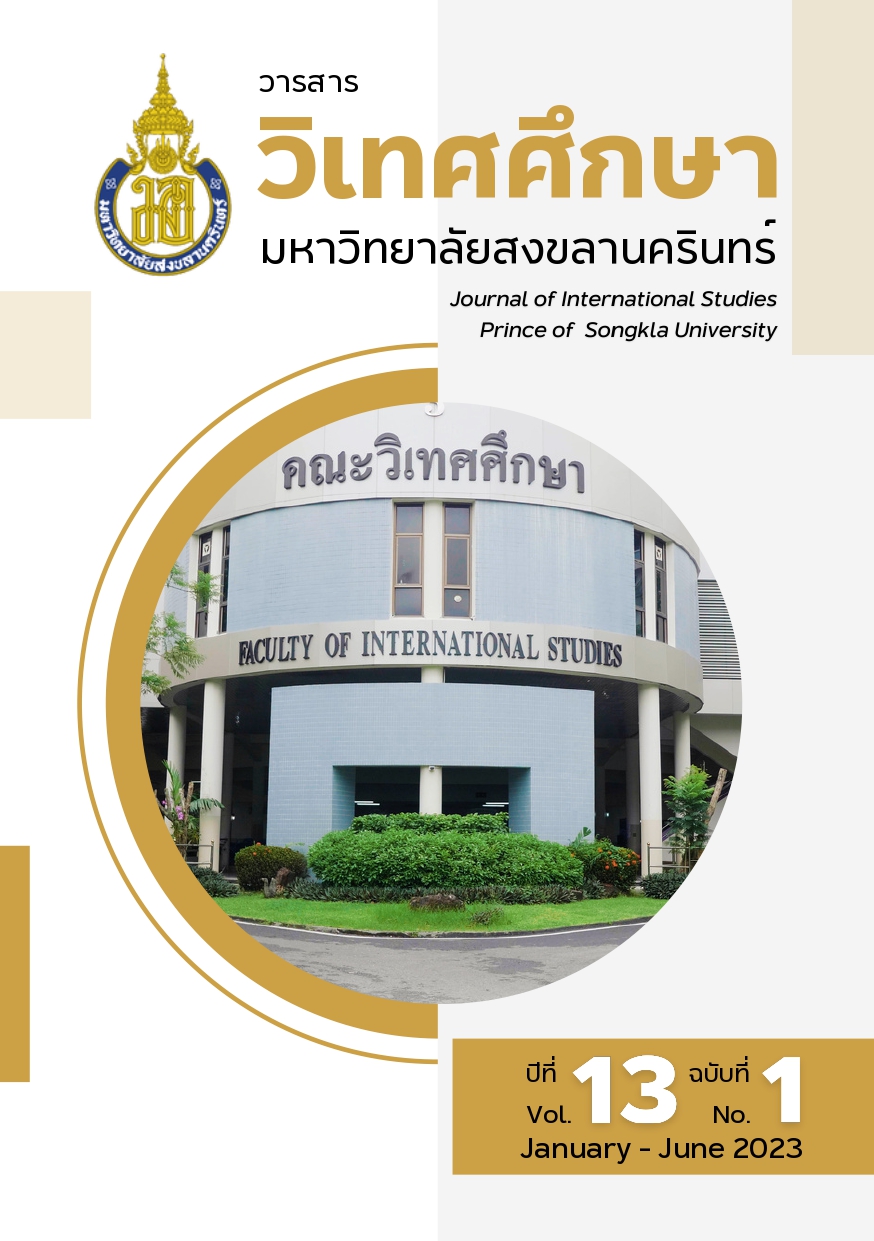Gastronomy Tourism Promotion of Halal Food of Ethnic Chinese Peranakan Culinary in “Glodok” Jakarta Chinatown
Main Article Content
Abstract
The topic of gastronomy was chosen because this phenomenon has become part of tourism. It is related to the culinary arts – food; presenting to locality, identity, and culture. The purpose of this study is to examine the philosophy of various halal culinary delights in Glodok which is West Jakarta is Chinatown, Jakarta. This study used descriptive method with qualitative description of fieldwork data such as, the types of halal food, and showed certain restaurants which sell halal food in Glodok at Jakarta Chinatown. The results show that the philosophy, seasoning, taste, and appearance for foods such as Kuotie, noodles (Bakmie) Mie Kangkung Si Jangkung, and Lim Curry, and Bakpia are still the same as those from China. The shift occurred in those foods or culinary without pork are sold, which are appropriate for consumption by the Indonesian people. This philosophy and acculturation of Chinese-Indonesian culture must be maintained. So, it is advisable for food vendors to maintain and study gastronomy so that the information provided will be more complete and more accurate. Further research carried out for other disciplines such as economics and gastronomic tourism that are more in-depth.
Article Details

This work is licensed under a Creative Commons Attribution-NonCommercial-NoDerivatives 4.0 International License.
Statements and opinions expressed in articles herein are those of the authors and do not necessarily reflect the position of the editors or publisher.
Article, information, text, image, etc. which are published in Journal of International Studies, belong to Journal of International Studies. If anybody or any organization would like to use part or whole of them, they must receive written permission from Journal of International Studies before usage.
References
Boyne, S., Hall, D., & Williams, F. (2003). Policy, support and promotion for food-related tourism initiatives: A marketing approach to regional development. Journal of Travel & Tourism Marketing, 14(3-4), 131-154.
Bromokusumo, A., Chen, N., & Wibowo, E. (2013). Peranakan Tionghoa Dalam Kuliner Nusantara. Jakarta: PT. Kompas Media Nusantara.
Fat Secret Indonesia. (2020, Desember 25). Santan. From Fat Secret Indonesia: https://www.fatsecret.co.id/kalori-gizi/umum/santan
Fauziah, N. (2022, January 18). 5 Kuliner Pecinan Halal di Glodok untuk Imlek, Nomor 2 Favorit Gus Dur. Retrieved from Pilar.id: https://lifestyle.sindonews.com/read/660051/185/5-kuliner-pecinan-halal-di-glodok-untuk-imlek-nomor-2-favorit-gus-dur-1642482065?showpage=all
Gilleisole. 2001.Psikologi Umum. Bandung: Bumi Aksara.
Gumulya, D. (2017). Pencampuran Budaya Cina, Jawa, dan Belanda pada Budaya Makan Cina Peranakan. ANDHARUPA: Jurnal Desain Komunikasi Visual & Multimedia, 3(02), 130-143.
Idris, M. (2017, July 13). Pasar Glodok: Pernah Jaya di 1980-an dan Saksi Bisu Kerusuhan 1998. Retrieved from detikFinance: https://finance.detik.com/berita-ekonomi-bisnis/d-3559361/pasar-glodokpernah-jaya-di-1980-an-dan-saksi-bisu-kerusuhan-1998
Indriyanti, T. (2022, May 20). Resep Bakpia Kacang Hijau, Oleh-oleh Khas Yogyakarta. Retrieved from Kompas: https://www.kompas.com/food/read/2022/05/20/210600975/resep-bakpia-kacang-hijau-oleh-oleh-khas-yogyakarta-
Indonesian Chef Association. (2020, April 13). Beberapa Metode dalam Memasak. Retrieved from Indonesian Chef Association: https://indonesianchefassociation.com/article/content/ketahui-beberapametode-dalam-memasak
Ketaren, I. (2017). Gastronomi Upaboga Indonesia. Jakarta: Indonesian Gastronomy Association.
Khairunnisa, S., N. (2021). Menikmati Kuotie Halal di Petak Enam Glodok, Kuotie Shantung Ling. Retrieved from https://www.kompas.com/food/read/2021/06/04/160800675/menikmati-kuotie-halal-di-petak-enam-glodok-kuotie-shantung-ling?page=all.
Lee, K. H., Packer, J., & Scott, N. (2015). Travel lifestyle preferences and destination activity choices of Slow Food members and non-members. Tourism Management, 46, 1-10.
Liholt, A. (2015). Entomological Gastronomy: A Gastronomical Approach to Entomophagy. Philadelphia: Lulu. com.
Lugmayr, A., Sutinen, E., Suhonen, J., Sedano, C. I., Hlavacs, H., & Montero, C. S. (2016). Serious Storytelling - A First Definition and Review. 1.
Prasetyo, T., & Medhiatika, N. L. M. V. (2020). GASTRONOMI KULINER PERANAKAN NON-HALAL DI GLODOK, JAKARTA. Jurnal Industri Pariwisata, 3(1), 36-45.
Pujawan, A. K. A., & Trisdayanti, N. P. E. (2015). Eksplorasi Makanan Tradisional Bali di Kabupaten Bangli. Jurnal Gastronomi, 3(1).
Pujilestari, S., Amelia, J. R., & Romadhan, M. F. (2019). POTENSI WISATA GASTRONOMI HALAL DI WILAYAH PECINAN, PETAK 9, GLODOK JAKARTA. Jurnal Industri Pariwisata, 1(2), 114-124.
Priherdityo, Endro. (2017). Blusukan Kuliner di Antara Gang Glodok. https://www.cnnindonesia.com/gaya-hidup/20170128012450-262-189632/blusukan-kuliner-di-antara-gang-glodok. Accessed on 10 Agustus 2022.
Privitera, D., & Nesci, F. S. (2015). Globalization vs. local. The role of street food in the urban food system. Procedia Economics and Finance, 22, 716-722.
Rama, Febri. (2018). Mengenal Sejarah Bakso, Kuliner Sejuta Umat Selama Berabad-abad. https://travelingyuk.com/sejarah-bakso/80734. Accessed on 08 Agustus 2022.
Rao, H., Monin, P., & Durand, R. (2003). Institutional change in Toque Ville: Nouvelle cuisine as an identity movement in French gastronomy. American journal of sociology, 108(4), 795-843.
Riadil, I. G. (2020). Tourism industry crisis and its impacts: investigating the Indonesian tourism employees perspectives’ in the pandemic of COVID-19. Jurnal Kepariwisataan: Destinasi, Hospitalitas Dan Perjalanan, 4(2), 98-108.
Rosana, F. C., & Wijanarko, T. (2020, February 7). TEMPO.CO. Diambil kembali dari Cerita tentang Kari Lam Legendaris di Gang Gloria, Glodok: https://travel.tempo.co/read/1058130/cerita-tentang-kari-lam-legendarisdi-gang-gloria-glodok/full&view=ok
Roszi, J. P., & Mutia. (2018). Akulturasi Nilai-Nilai Budaya Lokal dan Keagamaan dan Pengaruhnya terhadap Perilaku-Perilaku Sosial. 8.
Rohman, Taufigur. (2017). Sejarah Bakpia Pathok, Jajanan Khas Yogyakarta yang Mendunia. https://phinemo.com/sejarah-bakpia-pathok-jajanan-khas-yogyakarta-yang-mendunia. Accessed on 10 Agustus 2022.
Sankar, A. (2017). Creation of Indian - Chinese cuisine: Chinese food in an Indian city. Journal of Ethnic Foods, 3-4.
Shahab, A. (2002). Betawi: Queen of the East. Jakarta: Republika.
Shetty, A. (2019, November 26). A Guide to Indian Cooking Techniques. Diambil kembali dari Simmer to Slimmer : https://simmertoslimmer.com/indiancooking-techniques/
Sormaz, Umit (2015). Gastronomy in Tourism. https://www.sciencedirect.com/science/article/pii/S2212567116302866. Accessed on 15 Agustus 2022.
Sugiyono, P. (2015). Metode penelitian kombinasi (mixed methods). Bandung: Alfabeta, 28, 1-12.
Tanamal, W. (2018, September 30). 5 Tempat Makan di Glodok yang Masih Eksis Hingga Sekarang. Retrieved from IDN TIMES: https://www.idntimes.com/food/dining-guide/william-tanamal/5-tempatmakan-di-glodok-c1c2/5
Titin, F. (2014). Sejarah Kawasan Pecinan Pancoran - Glodok dalam Konteks Lokalitas Kampung Kota Jakarta. Proceeding Seminar Nasional "Membangun Kota Berdasarkan Karakter Lokalitas"
Wenhua, Zhonghua. (2012). Jiaozi dan Kuotie. http://web.budaya-tionghoa.net/index.php/item/1666-jiaozi-dan-kuotie. Diakses tanggal 21 September 2022.
Wibisono, S. K. (2005). Identitas Nasional Aktualisasi Pengembangnnya Melalui Revitalisasi Pancasila. Makalah disampaikan pada Kursus Calon Dosen Pendidikan Kewarganegaraan yang diselenggarakan oleh Depdiknas Dirjen Dikti di Jakarta pada tanggal, 12-23.
Wijaya, Yana Gabriella. (2019). Sejarah Bakmi hingga Jadi Favorit di Indonesia. https://travel.kompas.com/read/2019/11/27/111100127/sejarah-bakmi-hingga-jadi-favorit-di-indonesia-. Accessed on 21 September 2022.
Yuniarti, P. (2021, February 01). Mie Kangkung Si Jangkung, Setengah Abad Lebih jadi Legenda Glodok. Retrieved from Pilar.id: https://www.pilar.id/mie-kangkung-si-jangkung-setengah-abad-lebih-jadi-legenda-glodok/


